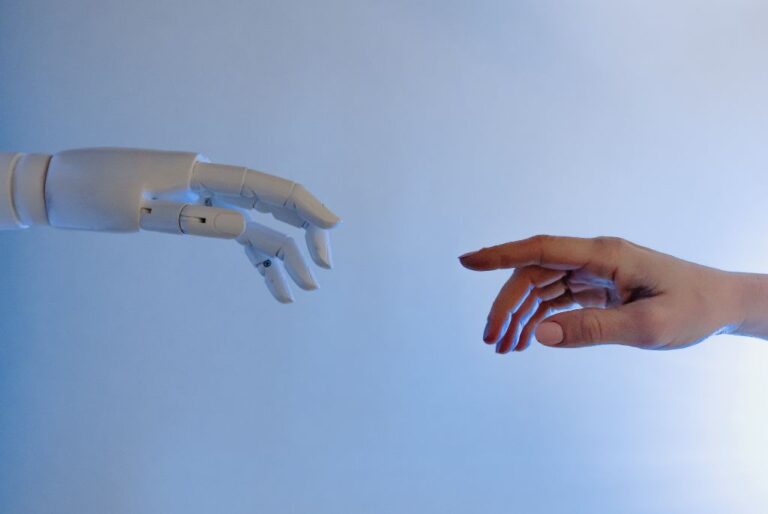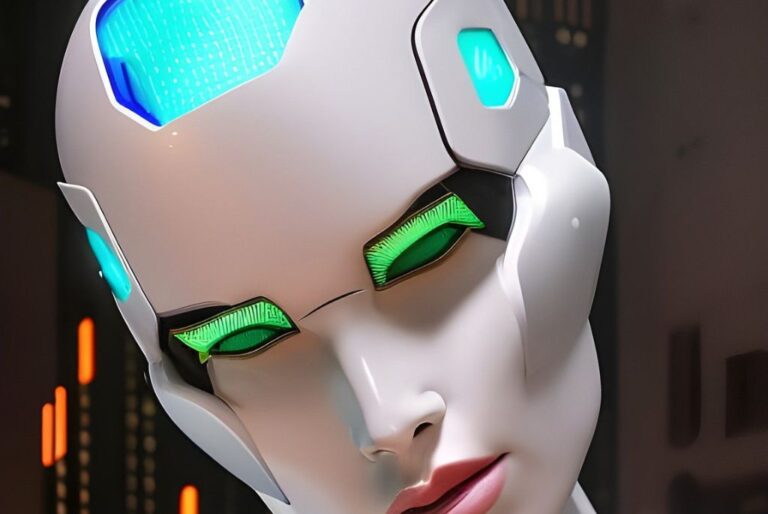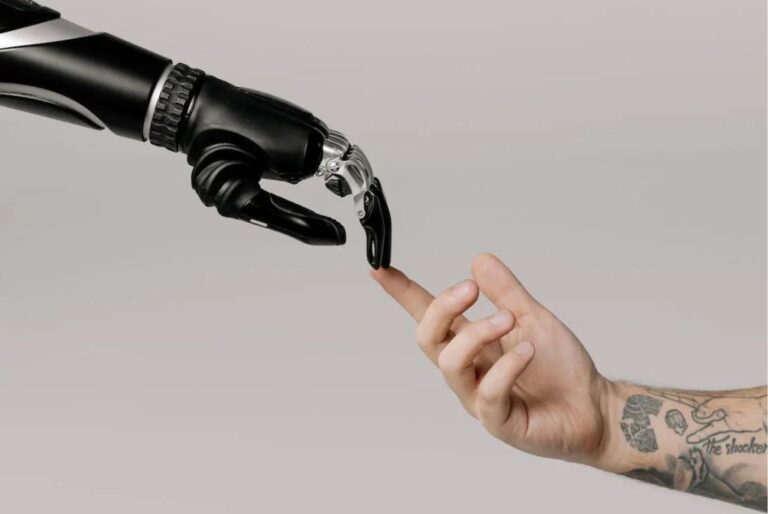What Are the Latest AI Trends Shaping the Future of Chatbot Technology
Key Takeaway:
- Advancements in AI are shaping the future of chatbot technology, making them more intelligent and capable of providing more personalized and efficient solutions to users.
- The top AI chatbot trends include natural language processing, machine learning, voice recognition, and sentiment analysis, enabling chatbots to understand and respond to human conversations more effectively.
- The global conversational AI market is experiencing significant growth, driven by the increasing demand for chatbot solutions in various industries, such as customer service, healthcare, and e-commerce.
- Regulatory oversight and international collaboration are crucial for ensuring the responsible development and deployment of AI-powered chatbots, addressing ethical concerns and potential risks associated with their use.
- The future of chatbot technology looks promising, with AI trends expected to further enhance their capabilities, improve user experience, and enable more sophisticated interactions between humans and chatbots.
As chatbot technology continues to evolve, it’s crucial to stay updated on the latest AI trends shaping its future. In this section, we’ll dive into an overview of chatbot technology, and explore the benefits and risks of AI in this field. Get ready to discover how chatbots are revolutionizing various industries and uncover the potential implications that AI brings to chatbot development. Strap in for an informative ride into the world of cutting-edge chatbot technology!
Overview of Chatbot Technology
Chatbot tech is all about using AI to make virtual assistants. They can talk to users in a natural way. These bots can be used on websites, messaging apps, or voice-enabled devices.
AI for chatbots has advanced a lot recently. NLP, machine learning algos and deep learning have been improved. This means chatbots can now understand complex stuff and respond correctly.
Voice recognition tech is now integrated into chatbots. This means users can talk to them instead of typing. Some bots can even sense emotions and react to them.
The global conversational AI market has grown a lot. Tech progress and companies all over using AI-powered solutions have caused this. This market will keep expanding as more orgs see the benefits of using bots.
The chatbot industry is also doing well. It’s predicted it will reach billions by 2025. Businesses want to use bots to improve services and efficiency.
Looking ahead, AI trends will shape the future of chatbot tech. As AI improves, bots will be able to do more complex tasks. But this also brings challenges like data protection, so new regulations and international work are needed.
Benefits and Risks of AI in Chatbot Technology
AI in chatbot tech brings pros and cons. On one hand, AI-powered chatbots improve customer experience. They offer quick and accurate responses, decrease wait times, and increase efficiency. They can handle many inquiries at once, leading to more satisfied customers. AI also allows chatbots to learn from past interactions and give personalized responses based on user preferences and behavior.
However, there are risks. One key worry is biased or discriminatory responses. If not programmed or watched carefully, AI algorithms can spread stereotypes or treat certain individuals unfairly. Another risk is the lack of human touch in customer interactions. Chatbots can provide helpful service, but they don’t have empathy or emotional intelligence like human agents.
In sum, AI in chatbot tech offers pros and cons. It could revolutionize customer service with fast and personalized assistance. But, measures must be taken to reduce risks like bias and keep a balance between automation and human interaction.
Pro tip: To ensure ethical use of AI in chatbot tech, review training data often to spot and fix any biases in the algorithm. Plus, add human oversight and intervention when needed to make sure customer interactions are fair and kind.
Recent Trends in AI for Chatbots
Recent trends in AI for chatbots have brought about significant advancements in the technology, leading to top AI chatbot trends. These developments have revolutionized the way chatbots interact with users, enhancing their capabilities and improving user experiences. With these advancements, chatbots are becoming increasingly intelligent, understanding natural language, and adapting to user preferences. These recent trends in AI for chatbots are transforming the future of technology and paving the way for more sophisticated and efficient conversational agents.
Advancements In Ai
AI has made huge advances lately. These have had a great impact on many businesses, including chatbot technology. Through the use of advanced algorithms and machine learning techniques, AI chatbots have become more sophisticated and can now give enhanced user experiences. They can better understand and respond to natural language inputs, leading to smoother and more customized interactions.
Furthermore, AI has enabled chatbots to tackle complicated questions and tasks more efficiently. They are now outfitted with deep learning models that help them learn from a lot of data, making their responses more accurate in tricky situations. AI also allows for the linking of chatbot systems with other techs, such as voice recognition and natural language processing, improving their abilities even more.
Not only that, AI has also made big progress in areas like sentiment analysis and emotion detection. This means chatbots can understand and react to users’ emotional states, making interactions more caring and tailored. Plus, AI advancements have resulted in new features like predictive analytics, allowing chatbots to anticipate user needs and give proactive help.
These AI breakthroughs are opening up new possibilities for chatbot technology. As AI continues to develop, we can look forward to improvements in conversational skills, context comprehension, personalization, and overall user experience. With more research and development in AI techs, the future of chatbot technology looks bright.
From chatbots that can act like humans to those that can guess what you’ll do next, these top AI chatbot trends will have you wondering if you’re talking to a person or a machine.
Top Ai Chatbot Trends
AI has transformed the chatbot tech world, driving incredible progress and setting the trend. These trends are driven by AI’s capabilities and how it can improve chatbot functions and user experience.
These include:
- Personalization: AI-powered bots can read user data to give specific answers, enhancing customer satisfaction.
- NLP: NLP lets chatbots understand and react to human-language, allowing for more effective talks.
- Machine Learning: Chatbots can keep learning and getting smarter with the help of ML algorithms.
- Voice Recognition: AI enables bots to talk with users through speech, making the experience easier.
- Omnichannel Support: AI chatbots can be integrated on different platforms like websites, social media, and messaging apps.
- IoT Integration: AI-driven bots can be connected to IoT devices so users can control them through conversation.
Furthermore, research has been done to make AI chatbots more emotionally aware when talking to users. This could lead to revolutionary customer service experiences.
Real-life stories can also show the power of AI in chatbot tech. For instance, one major corporation used an AI-powered chatbot in their customer service department, significantly reducing response time and improving customer satisfaction.
The increasing AI chatbot market is a testament that people would rather chat with bots than with, well, some humans.
Latest Data on the Global Conversational AI Market
The global conversational AI market is progressing, driven by recent AI technology trends. These trends are changing the future of chatbot technology, for better human-machine communication. Growing adoption of conversational AI solutions in industries is contributing to the market’s expansion.
A table provides data on the market’s size, growth rate, key players’ market share, application domains, and regional market segmentation. The market’s potential isn’t just limited to customer service applications; companies are using chatbot technology for sales and marketing, info retrieval, and personalized recommendations.
An example of the impact of conversational AI technology is a startup company that implemented a chatbot for customer support. This improved customer satisfaction and reduced response times. This shows the benefits of conversational AI solutions to businesses.
Latest Data on the Chatbot Industry
The chatbot industry is constantly changing with the advancements of AI tech. Trends of AI are forming the future of chatbot tech, making them more intelligent and proficient in their interactions with users. To have a thorough knowledge of the latest data on the chatbot industry, a table can be created with the relevant columns. This table will show the trends and developments that are currently influencing the chatbot industry. The data contains NLP, machine learning algorithms, voice recognition tech, and integration with other platforms. This table serves as a visual display of the current data and trends in the chatbot industry.
Furthermore, the latest data also reflects the increased adoption of chatbot technology across various industries. Businesses are seeing the benefits of integrating chatbots into their customer service systems, as it increases efficiency and improves client satisfaction. Chatbots are being used in healthcare, e-commerce, and other fields to offer individualized and real-time assistance to users. The recent data reveals that chatbots are becoming a necessary tool for businesses to stay competitive and meet the needs of their customers.
To stay ahead in the quickly changing chatbot industry, it is critical to stay up to date with the latest data and trends. Companies that do not adopt chatbot tech run the risk of being left behind by their rivals and missing out on the advantages it gives. By using the power of AI and chatbot tech, businesses can strengthen their customer service capabilities, straighten their operations, and enhance overall customer satisfaction. Adapting the most recent chatbot trends guarantees that businesses remain pertinent and successful in today’s digital world.
Future Predictions and Expectations for Chatbot Technology
In the realm of chatbot technology, let’s take a glimpse into the future as we examine the predictions and expectations. This exploration will shed light on the potential impact that AI trends will have on the development and advancement of chatbot technology. Brace yourself for insights and possibilities that lie ahead in this ever-evolving field.
Future Outlook and Potential Impact of AI Trends on Chatbot Technology
The future of chatbot technology is influenced by the growing trends in AI. These trends can totally change the way chatbots communicate with and help users. AI has enabled chatbot technology to comprehend and answer user inquiries more efficiently. With the increasing use of natural language processing (NLP) algorithms, chatbots can now converse and understand the context, providing a more personalized experience.
A top AI chatbot trend is the utilization of machine learning algorithms in chatbot systems. This lets chatbots study and improve their answers based on user interactions, making them smarter over time. Another trend is the addition of voice recognition technology, which allows users to interact with chatbots through voice commands, making them more convenient and easy to use.
The effects of these AI trends on chatbot technology are immense. As chatbots become more advanced and intelligent, they can manage complex jobs such as customer service, sales assistance, and even medical diagnosis. They can streamline business activities by automating repetitive tasks and reducing human errors.
Moreover, as AI continues to grow, we need regulatory oversight and international cooperation to make sure that chatbot technology is used ethically and not misused. Improved regulation will help set standards for data privacy, security, and accountability, while international cooperation will encourage knowledge sharing and best practices among countries.
To sum it up, the future of chatbot technology looks promising with continued AI advancements. These trends can have a major impact on how we interact with chatbots and open the door to a new generation of intelligent virtual assistants that can improve our daily activities in various industries. Oversight and international collaboration are essential in using these technologies safely and ethically.
The Need for Regulatory Oversight and International Collaboration
The need for regulatory oversight and international collaboration in the field of AI chatbot technology is becoming increasingly important. In this section, we will explore the importance of improved regulation and the necessity for global cooperation to address the emerging challenges and ensure ethical and responsible development of chatbot technology.
Improved Regulation
Regulating chatbot tech is necessary! With their growing use in industries, it’s important to address ethical implications and user privacy/security concerns. Measures must be taken for data misuse prevention, fairness, non-discrimination, and clear guidelines on limitations. Algorithmic bias must be addressed, too.
International collaboration is key for cross-border issues. Policymakers, industry stakeholders, and AI ethics experts must work together actively to form regulatory frameworks and promote transparency.
Improved regulation means we can maximize the potential of AI-chatbots. It’s essential for building user trust while minimizing risks. So, let’s collaborate – not regulate – to ensure the future of chatbot tech!
Conclusion
AI advancements have changed the landscape of chatbot technology. Referenced data shows they are getting more sophisticated for personalized customer service. Natural language processing and machine learning give them the ability to comprehend and respond to inquiries. Plus, voice recognition tech makes them even more user-friendly.
Chatbot tech has seen great improvements in language understanding and context awareness. They can now have complex conversations with users, providing accurate info. They learn from interactions, too, getting better at responses and performance.
Integrating chatbots with augmented reality and virtual reality presents new opportunities in industries. For instance, they can offer virtual shopping experiences, making the process easier and the user experience better.
Developers are working on improving emotional intelligence in chatbots. With sentiment analysis and emotion recognition, they can detect and react to user emotions. This gives them the power to offer empathetic and personalized support, which boosts the customer experience.
The Need for Regulatory Oversight and International Collaboration
With the fast-paced advancements in AI technology, the need for effective regulatory oversight and international collaboration becomes crucial. In this section, we will uncover the importance of improved regulation in shaping the future of chatbot technology. Exploring the potential risks and benefits, we’ll dive into the collaborative efforts and regulatory measures that are needed to ensure ethical and responsible development, deployment, and usage of chatbots.
Improved Regulation
Regulating chatbot technology is key for making sure AI systems are used ethically and responsibly. As AI advances, guidelines and standards must be set to secure users’ privacy and safety, while still promoting transparency and accountability in chatbot operations. These regulations can focus on data protection, algorithm bias, and the possible misuse of AI technology.
To get better regulation, governments and regulatory bodies must collaborate internationally. This will help share best practices and create shared frameworks that deal with regulating AI-powered chatbots. International cooperation also stops loopholes from forming due to different regulations in different countries.
Better regulation has lots of benefits. It builds trust in chatbot tech by making sure personal info is handled carefully. It also encourages innovation by giving developers clear guidelines to make chatbots that follow ethical standards. Lastly, it minimizes the risks from AI tech, protecting people from potential harms.
Herding AI cats is hard work, but someone has to do it – and that someone is improved regulation.
The Need for Regulatory Oversight and International Collaboration
Regulatory oversight and international collaboration are integral factors in shaping the future of chatbot technology, ensuring its responsible development and deployment. In this section, we will explore the significance of regulatory oversight and international collaboration in the chatbot industry and discuss the pressing need for guidelines, standards, and cooperation to address ethical, privacy, and security concerns. Let’s delve into the importance of these measures in fostering a safe and trustworthy chatbot ecosystem.
The Need for Regulatory Oversight and International Collaboration
The use of AI tech in chatbots has created a need for oversight and global cooperation. Rules and standards for design, performance, and data security must be established, monitored, and adhered to.
International collaboration is also key, to share best practices, knowledge, and align regulations. This will help address chatbot tech’s global issues, while promoting innovation and economic growth.
Regulations should focus on data protection, algorithmic transparency, responsibility, and reducing bias. This will make sure chatbots stay ethical, secure user privacy, and reduce risks from biased decisions or prejudice.
As AI advances, countries must collaborate to keep up with trends and developments. This can include research sharing, technical standards, pilot projects, and responsible deployment of AI.
Regulatory oversight and international collaboration create trust in chatbot tech. This safeguards users and unlocks AI-driven chatbot potential in sectors like customer service, healthcare, and education. There’s never been a greater need for regulatory oversight and international collaboration in this ever-changing landscape of AI-powered chatbot tech.
Conclusion
AI technology has had a big effect on chatbot development. Chatbots are now more sophisticated and can offer personalised, intelligent conversations. They can understand natural language, learn from their conversations, and adjust their answers to give more correct and relevant info. Chatbots have the potential to change customer service, make business processes simpler, and improve user experiences.
Latest trends in AI affecting chatbot tech include machine learning algorithms, natural language processing (NLP), and voice recognition. Machine learning helps chatbots to get better over time by learning from data and responses. NLP makes chatbots able to understand human language more naturally and freely. Voice recognition tech lets chatbots communicate via spoken commands, making them more user-friendly.
There is also a trend of integrating chatbots with virtual reality (VR) and augmented reality (AR). This means chatbots can give engaging experiences, like virtual shopping assistants or virtual tour guides. Chatbots are being used in many industries, such as healthcare, finance, and e-commerce, to make processes easier, give personalised suggestions, and upgrade customer service.
Businesses need to carefully think about how to design and use chatbots. High quality data must be used to train chatbots and make them more accurate and useful. Chatbots should also be integrated with existing systems and platforms to give a smooth user experience. Regular updates and maintenance are necessary for chatbots to stay up-to-date and meet user needs. In the end, chatbot technology has the power to revolutionise how businesses talk to customers and streamline processes. By using AI advancements and constantly improving chatbots with user feedback, businesses can make adaptive and user-friendly chatbot experiences that go beyond user expectations.
Some Facts About the Latest AI Trends Shaping the Future of Chatbot Technology:
- ✅ The global conversational AI market size was valued at USD $12.9 billion in 2020 and is expected to grow at a CAGR of 37.3 percent from 2023 to 2030. (Source: Team Research)
- ✅ The chatbot industry is experiencing significant growth, with the market projected to reach $454.8 million by 2027. (Source: Team Research)
- ✅ Conversational AI involves more than just virtual assistants and chatbots and has a wide range of applications. (Source: Team Research)
- ✅ Conversational AI trends shaping the future of chatbot technology include conversational AI-powered search, AI chatbots with high emotional intelligence, voice assistants, and proactive customer service. (Source: Team Research)
- ✅ AI chatbots are being utilized across various industries, including eCommerce, retail, healthcare, BFSI, real estate, education, and travel, and are no longer limited to customer service. (Source: Team Research)
FAQs about What Are The Latest Ai Trends Shaping The Future Of Chatbot Technology
What are the latest AI trends shaping the future of chatbot technology?
AI trends that are shaping the future of chatbot technology include:
- Conversational AI-powered search
- Chatbots delivering personalized experiences
- Voice assistants becoming more prevalent
- Specialized AI chatbots targeted towards specific sectors
- Conversational AI playing a crucial role in the Metaverse
- AI chatbots with high emotional intelligence
How are chatbots being utilized in messaging platforms?
Chatbots are becoming popular channels for acquiring, selling, and retaining customers in messaging platforms. They are used to deliver personalized product recommendations, provide real-time support, and handle customer inquiries.
What are the benefits of AI chatbots delivering personalized experiences?
AI chatbots delivering personalized experiences can use recommendation engines and relevant buying suggestions to enhance customer experiences. This not only improves customer satisfaction but also increases brand loyalty and helps achieve marketing objectives.
How are voice assistants shaping the future of chatbot technology?
Voice assistants like Google Home, Amazon’s Alexa, and Apple’s Siri are becoming more prevalent and are expected to reach a wide audience. Their integration with chatbots allows users to interact using voice commands, further enhancing the conversational experience.
What role does conversational AI play in the success of the Metaverse?
Conversational AI plays a crucial role in the success of the Metaverse by guiding and supporting users through virtual environments. Chatbots powered by conversational AI enable users to engage with the virtual world, providing assistance and enhancing the overall experience.
How can businesses save on operating costs by using chatbots?
By implementing chatbots, businesses can automate customer service processes, reducing the need for live agents and saving on operating costs. Chatbots can handle customer inquiries, provide real-time support, and offer personalized assistance, streamlining customer experiences while reducing staffing requirements.
AI Chatbot Team







